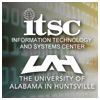Lightning Imaging Sensor (LIS) on the International Space Station (ISS) Activation, Assessment and Operation in the First Six Months
| Title | Lightning Imaging Sensor (LIS) on the International Space Station (ISS) Activation, Assessment and Operation in the First Six Months |
| Publication Type | Poster |
| Year of Publication | 2017 |
| Authors | Ellett, W |
| Secondary Authors | Blakeslee, RJ, Stewart, MF, Hawkins, DL, Mach, DM, Wharton, NA, Ranganathan, J, He, Y, Flynn, SE, Garrett, MG, Harrison, S |
| Conference | International Space Station Research & Development (ISS&RD) |
| Date Published | 07/2017 |
| Conference Location | Washington DC |
| Keywords | ISS LIS Lightning |
| Abstract | In recent years, the NASA Marshall Space Flight Center, the University of Alabama in Huntsville, and their partners have developed and demonstrated space-based lightning observations as an effective remote sensing tool for Earth science research and applications. The Lightning Imaging Sensor (LIS) on the Tropical Rainfall Measuring Mission (TRMM) provided global observations of tropical lightning for an impressive 17 years before that mission came to a close in April 2015. Now a space-qualified LIS, built as the flight spare for TRMM, has been installed on the International Space Station (ISS) for a minimum two year mission following its SpaceX launch on February 19, 2017. The LIS, flown as a hosted payload on the Department of Defense Space Test Program-Houston 5 (STP-H5) mission, was delivered to the ISS in the Dragon trunk and robotically installed in an Earth-viewing position at a location on the outside of the ISS. From there it will continuously observe the amount, rate, and radiant energy lightning within its field-of-view as it orbits the Earth. The LIS is a tried and true sensor. Therefore, placing LIS on the Space Station provides a great opportunity to not only extend this 17-year record of tropical lightning measurements but also to expand that coverage to higher latitudes missed by the previous mission. The LIS measurement will also provide invaluable data to help calibrate and validate observations from the new Geostationary Lightning Mapper (GLM) that was just launched this past November on NOAA’s newest weather satellite GOES-16. One of the most important science objectives of this mission, however, will be to better understand the processes which cause lightning, as well as the connections between lightning and subsequent severe weather events. This understanding is a key to improving weather predictions and saving lives and property here in the United States and around the world. An especially unique contribution from the ISS platform will be the availability of real-time lightning data, especially valuable for operational forecasting and warning applications over data sparse regions such as the oceans. The ISS platform will also uniquely enable LIS to provide simultaneous and complementary observations with other ISS payloads such as the European Space Agency’s Atmosphere-Space Interaction Monitor (ASIM) that will be exploring the connection between thunderstorms and lightning with terrestrial gamma-ray flashes (TGFs) when it is launched to ISS in the near future. This presentation focuses upon the activation, mission operations, data handling, and evaluation of LIS science data from first light through the first six month of the mission. |
Involved Persons:




